In the intricate tapestry of the natural world, there exists a fascinating group of creatures that often go unnoticed, overshadowed by their more cognizant counterparts. These are the oblivious animals – a diverse assembly of species that seem blissfully unaware of the world’s complexities, yet hold the key to unraveling some of its most enigmatic phenomena.
From the humble honeybee navigating vast landscapes to the majestic humpback whale cruising the ocean depths, these creatures operate on autopilot, their actions dictated by instinct rather than conscious thought.
In this exploration of the animal kingdom’s unintentional wonders, we dive into the intriguing lives of oblivious animals. We’ll venture into their habitats, observe their behaviors, and uncover the extraordinary feats they accomplish, often without the faintest hint of awareness.
From the intricate dance of fireflies in sync to the celestial navigation of dung beetles under a starlit sky, these creatures offer profound insights into the enigma of life on Earth. Join us on a journey through the extraordinary world of oblivious animals, where instinct reigns supreme, and Mother Nature’s marvels are brought to light.
Table of Contents
The Diversity of Oblivious Animals:
The world of oblivious animals is a rich and diverse one, encompassing a vast array of species that exhibit varying degrees of unawareness. From the microorganisms in the soil to the giants of the animal kingdom, obliviousness is a trait that transcends taxonomic boundaries.
In forests, deserts, oceans, and skies, these creatures play unique roles in ecosystems, often with profound ecological consequences. Exploring this diversity sheds light on the intricacies of evolution and adaptation, reminding us that not all creatures need to be aware of their surroundings to thrive in the natural world.
Sloth:
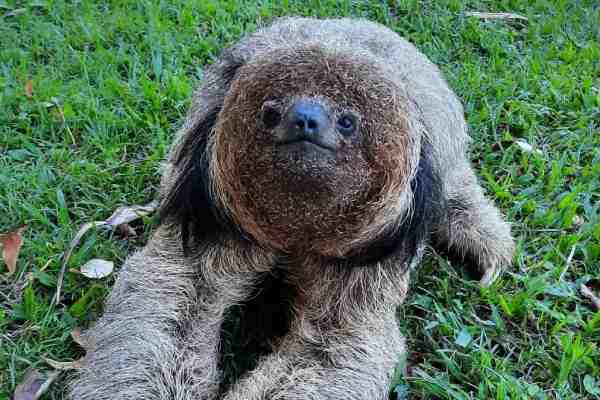
Sloths are renowned for their sluggish and seemingly oblivious nature. These arboreal mammals, found in the rainforests of Central and South America, spend most of their lives hanging upside-down from tree branches.
Their slow movements and leisurely pace are due to their low metabolic rates, a strategy to conserve energy. Sloths feed on leaves and plants, and their digestive systems are specially adapted to extract nutrients from these challenging food sources. While they may appear oblivious to the world around them, sloths are highly adapted to their environment, relying on their cryptic behavior to avoid predators.
Koala:

Koalas, native to Australia, are often seen as adorable and seemingly unaware animals. These marsupials primarily feed on eucalyptus leaves, which are low in nutrients and require a lot of energy to digest. Consequently, koalas spend most of their time resting and sleeping to conserve energy. While they appear oblivious, they are well-attuned to their environment, relying on their keen senses of smell and hearing to detect predators and other koalas.
Manatee:

Manatees, also known as sea cows, are large aquatic mammals that inhabit warm waters in regions like Florida and the Caribbean. Their gentle and slow-moving nature can make them appear oblivious, but it’s a survival strategy. Manatees are herbivores, primarily grazing on seagrass, and their slow metabolism means they need to eat a lot throughout the day.
They often rest near the surface, occasionally coming up for a breath of air. Despite their seemingly unaware demeanor, manatees are highly sensitive to their surroundings and can react quickly to threats, such as boat traffic.
Panda:

Giant pandas, native to China, are renowned for their bamboo diet and seemingly oblivious behavior. These bears spend most of their day eating bamboo, which is low in nutrients, so they must consume large quantities to survive. This focus on eating can make them appear oblivious to their surroundings.
However, pandas are skilled climbers and can swim, and they have a keen sense of smell and hearing, which they use to detect threats and locate mates. While their diet might make them appear oblivious, pandas are well-equipped to navigate their forested habitats.
Tortoise:

Tortoises, known for their slow and steady pace, are often perceived as oblivious animals. They are reptiles with a protective shell, and their sluggish movements are due to their anatomy and energy-conserving lifestyle. Tortoises are herbivores, feeding primarily on plants, and their slow metabolism allows them to survive on relatively low-calorie diets.
Their tough shells provide them with protection from predators, allowing them to take life at a leisurely pace. While tortoises may seem unaware of their surroundings, they can respond to stimuli and are well-suited to their terrestrial habitats.
These paragraphs highlight the unique adaptations and behaviors of each of the animals mentioned, showcasing how their seemingly oblivious nature often serves as an important survival strategy in their respective environments.
Hippopotamus:
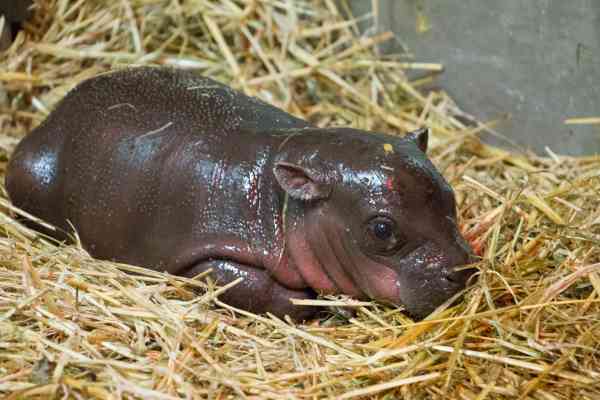
Hippos are massive mammals native to Africa, known for their formidable appearance and seemingly oblivious demeanor. Despite their bulk, hippos are excellent swimmers and can run surprisingly fast on land when provoked.
They spend most of their time submerged in water to keep their sensitive skin cool and moist. While they may appear sluggish, hippos are highly territorial and can be extremely aggressive if their space is intruded upon, showcasing their heightened awareness when it comes to protecting their territory and offspring.
Dugong:

Dugongs, sometimes called “sea cows,” inhabit warm coastal waters in the Indian and western Pacific Oceans. They are herbivorous marine mammals that graze on seagrass beds. Dugongs often appear oblivious as they slowly graze on underwater vegetation, but their seemingly languid movements help them conserve energy while foraging.
Despite their gentle demeanor, they possess acute senses, such as hearing and touch, which they use to navigate their underwater environment and detect potential threats like predators and boats.
Narwhal:

Narwhals are unique marine mammals known for their long, spiral tusks that can reach lengths of up to 10 feet. These elusive creatures are often seen as oblivious due to their elusive nature and tendency to inhabit Arctic and sub-Arctic waters.
Narwhals primarily feed on fish and squid and can dive to great depths to find their prey. While they may seem unaware of their surroundings, they have highly developed sensory abilities, including echolocation, which they use for navigation and locating prey. Their distinctive appearance and mysterious behavior have earned them a place in folklore and fascination.
Cassowary:

Cassowaries are large, flightless birds native to the tropical forests of New Guinea, nearby islands, and northern Australia. They are known for their striking appearance and the helmet-like casques on their heads. These birds can appear oblivious as they move through dense vegetation in search of fruits and small animals.
However, cassowaries are known for their territorial and sometimes aggressive behavior, especially when they feel threatened. Despite their apparent obliviousness, they are attentive to their environment and can react quickly when provoked.
Galapagos Tortoise:

Galapagos tortoises, native to the Galapagos Islands, are another species of tortoise known for their slow and deliberate movements. They are the largest tortoises in the world and can live for over a century. Galapagos tortoises primarily feed on vegetation, such as cactus and grasses, and their seemingly oblivious behavior is a result of their energy-efficient lifestyle.
However, these tortoises are adapted to their specific island habitats and can navigate rocky terrain and varying vegetation types. They are well-suited to their unique environments despite their slow pace.
Quokka:

Quokkas are small marsupials native to Australia, known for their endearing smiles and seemingly carefree expressions. They often appear oblivious as they graze on vegetation and hop around their island habitats. However, quokkas are well-attuned to their surroundings, using their keen sense of smell to locate food and detect potential threats. Despite their cheerful appearance, they are wild animals and should not be approached or disturbed.
Three-toed Sloth:

Three-toed sloths, like their two-toed counterparts, are arboreal mammals found in Central and South America. They are known for their slow movements and seemingly laid-back attitude. These sloths primarily feed on leaves and are adapted to conserve energy by minimizing activity.
Despite their sluggish appearance, they are agile climbers and can move quickly through trees when necessary. While they may seem oblivious, their behavior helps them survive in the dense rainforest canopy.
These paragraphs provide further insight into the behaviors and adaptations of these animals, showcasing how their apparent obliviousness often serves important ecological functions in their respective ecosystems.
Aye-aye:
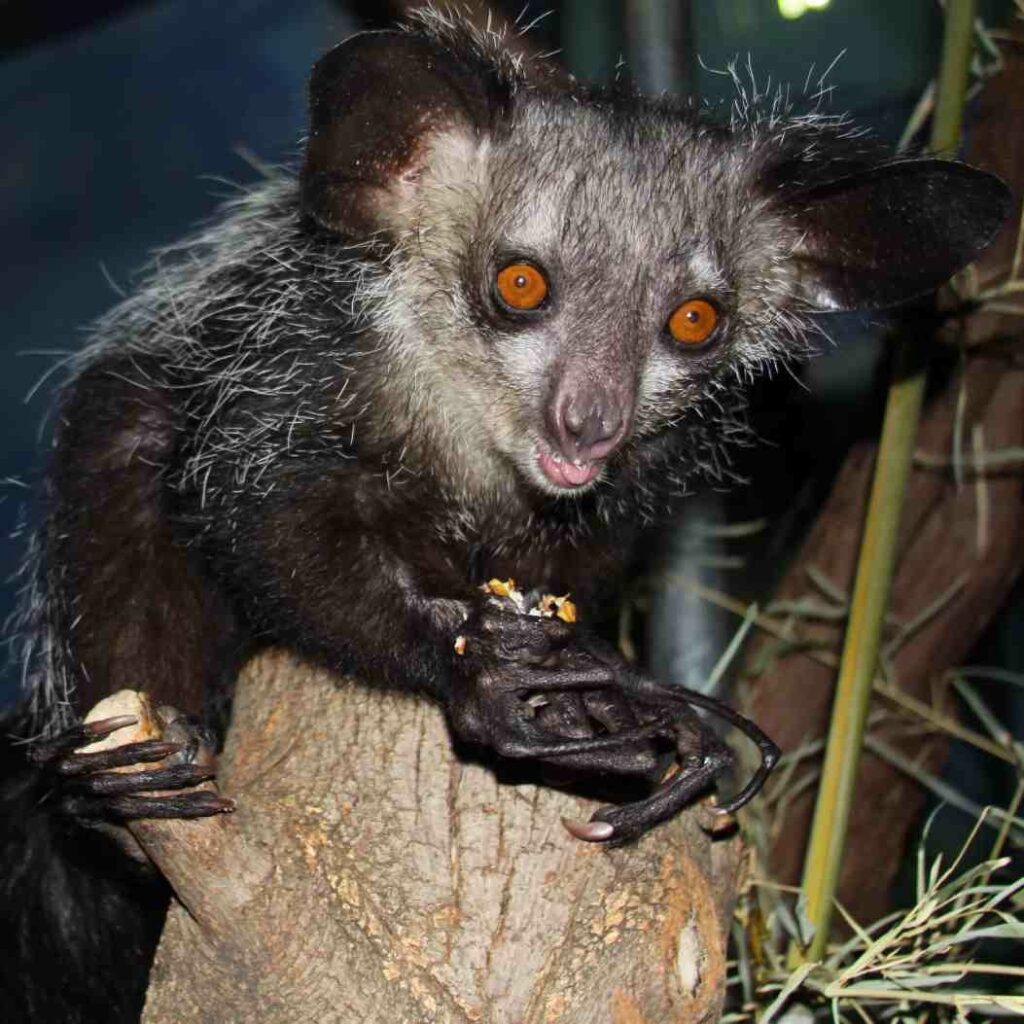
The aye-aye is a unique and fascinating primate native to Madagascar. It has a distinctive appearance with large eyes, a bushy tail, and a long, bony middle finger used for tapping on trees to locate insects beneath the bark. This behavior can make the aye-aye appear oblivious, but it’s an adaptation for finding its primary food source—grubs and insects hiding in tree crevices.
Despite its odd behavior and nocturnal lifestyle, the aye-aye has evolved specialized sensory adaptations for hunting prey in the dark, such as its keen sense of hearing.
Pangolin:
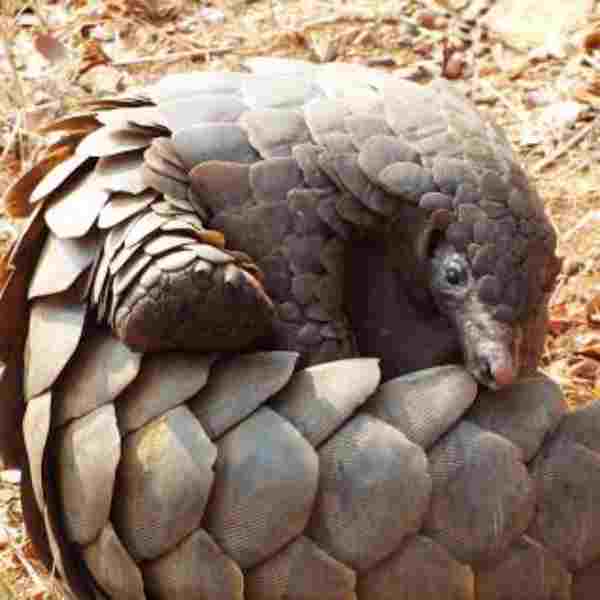
Pangolins are scaly, ant-eating mammals found in Africa and Asia. They are known for their unique armor of overlapping scales and their tendency to curl up into a ball when threatened. Pangolins might appear oblivious when they wander through their habitats in search of ants and termites, but they have specialized adaptations for this lifestyle.
Their strong claws are used to break into termite mounds and ant nests, and their long, sticky tongues allow them to capture insects. Pangolins are, however, highly vulnerable to habitat loss and poaching due to the illegal wildlife trade.
Wombat:

Wombats are marsupials native to Australia known for their burrowing behavior and relatively slow movements. They are herbivores that primarily feed on grasses and roots. Wombats might appear oblivious when they graze in grassy areas, but they are well-adapted to their subterranean lifestyle. Their burrows provide protection from predators and extreme weather conditions. Despite their seemingly sedate demeanor, wombats can move quickly when needed, and their sharp claws are used for digging their burrows.
Armadillo:

Armadillos are small, armored mammals found in the Americas, known for their tough, protective plates. They often appear oblivious as they forage for insects and other invertebrates in the soil. Their armored plating provides defense against predators, and when threatened, they can roll into a ball to further protect themselves.
Despite their slow and methodical digging behavior, armadillos are efficient hunters of underground prey, relying on their keen sense of smell and strong digging abilities.
Axolotl:
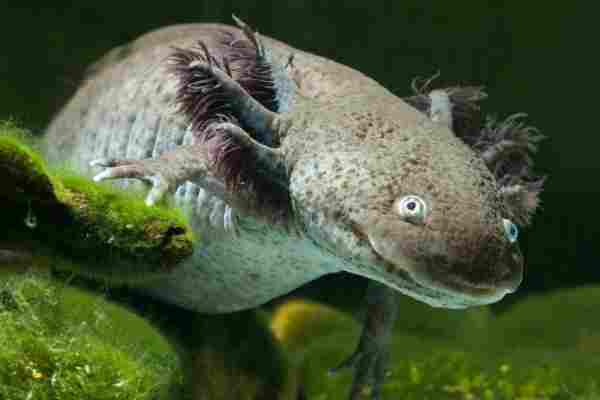
The axolotl is a unique and endangered amphibian native to Mexico. Often considered an aquatic “perpetual child,” it retains juvenile features throughout its life, such as external gills and a neotenic appearance.
Axolotls might seem oblivious as they float in the water or walk along the substrate of their habitat, but they possess remarkable regenerative abilities. They can regrow lost body parts, including limbs, spinal cord, and even parts of the heart, making them a subject of scientific interest.
Komodo Dragon:
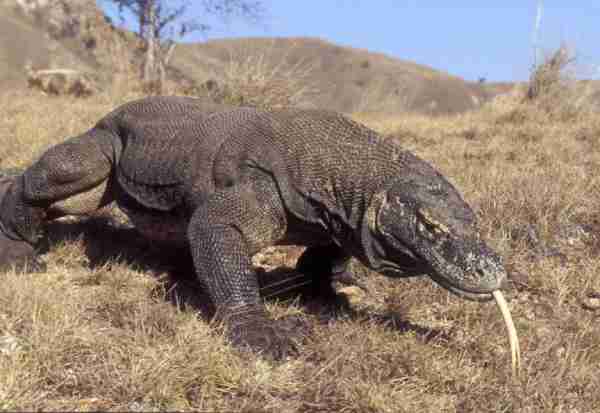
Komodo dragons are the world’s largest lizards and are native to the Indonesian islands. These formidable predators might appear slow and oblivious while basking in the sun, but they are skilled hunters.
Komodo dragons use their keen sense of smell to detect carrions from miles away and can sprint surprisingly quickly when pursuing prey. They are known for their powerful jaws and venomous bite, which can incapacitate or kill their prey over time.
Kiwi:
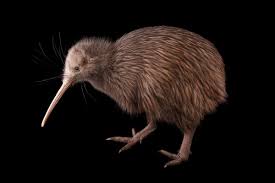
Kiwis are flightless birds native to New Zealand and are known for their round bodies, long bills, and nocturnal behavior. They might appear oblivious as they search for insects and worms in the forest undergrowth, but their long, sensitive bills are adapted for precisely locating prey in the dark. Kiwis are also highly territorial and can be quite aggressive when defending their territories.
Tasmanian Devil:
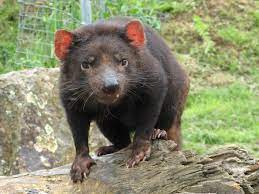
The Tasmanian devil, found only in Tasmania, Australia, is a carnivorous marsupial known for its loud and seemingly aggressive behavior. While they can appear oblivious as they scavenge for food or vocalize loudly, they are social animals with a keen sense of smell. Their scavenging behavior helps maintain the balance of their ecosystem by consuming carrion and preventing the spread of disease.
The Science Behind Obliviousness:
Delving into the science behind obliviousness reveals an intriguing interplay of genetics, neural architecture, and environmental pressures. Researchers are unlocking the secrets of how and why some animals operate on autopilot, relying on instinct rather than cognition.
By examining their brains, behaviors, and sensory perceptions, scientists are gaining insights into the evolutionary advantages and trade-offs associated with obliviousness. This scientific journey not only enhances our understanding of these creatures but also offers valuable lessons about the adaptability and resilience of life on Earth.
Human Interaction and Conservation:
As human activities continue to reshape the planet, the interaction between our species and oblivious animals becomes increasingly important. From habitat destruction to climate change, our actions often disrupt the delicate balance that allows these creatures to thrive. Understanding their needs and vulnerabilities is essential for effective conservation efforts. By raising awareness and fostering coexistence, we can strive to preserve the unique contributions of oblivious animals to ecosystems and biodiversity.
Obliviousness in Pop Culture and Folklore:
Oblivious animals have left an indelible mark on human culture and folklore throughout history. From Aesop’s fables to modern-day cartoons, these creatures often serve as metaphors for human behavior, imparting moral lessons and wisdom. They also feature prominently in popular culture, where their quirks and idiosyncrasies captivate our imaginations. Exploring the role of oblivious animals in our stories and traditions reveals the enduring fascination and symbolic significance they hold in our collective psyche.
The Future of Studying Oblivious Animals:
The field of studying oblivious animals is poised for exciting advancements in the coming years. Technological innovations, such as advanced tracking devices and neural imaging techniques, offer unprecedented opportunities to delve deeper into their worlds. Conservation efforts will continue to evolve, aiming to safeguard these creatures and their habitats.
Moreover, as our understanding of the interconnectedness of ecosystems grows, the importance of oblivious animals in maintaining ecological balance will become even more apparent. The future promises a deeper appreciation of the wonders of obliviousness and its critical role in the tapestry of life.
Final Words:
In the world of nature’s oblivious animals, there exists a realm of enchanting diversity, untold scientific mysteries, and enduring cultural significance. While these creatures may not possess the self-awareness that defines human existence, they possess a unique charm and serve as invaluable pieces in the intricate puzzle of life on Earth.
As we embark on a journey to unravel the secrets of obliviousness, let us remember that their existence not only enriches our understanding of the natural world but also carries profound lessons about adaptation, resilience, and the delicate balance of our shared planet. Embracing and conserving the oblivious animals of our world is a testament to our commitment to preserving the beauty and complexity of life in all its forms.
Reference:
- https://www.huffingtonpost.co.uk/entry/cute-animal-pictures_uk_5e71e70ec5b6f5b7c53b07e1
- https://animalsaustralia.org/our-work/inspiring-stories/animals-who-live-in-a-happiness-bubble/
- https://timesofindia.indiatimes.com/readersblog/mootnotmute/oblivious-of-ones-power-42737/

Rahul M Suresh
Visiting the Zoo can be an exciting and educational experience for all involved. As a guide, I have the privilege of helping students and visitors alike to appreciate these animals in their natural habitat as well as introducing them to the various aspects of zoo life. I provide detailed information about the individual animals and their habitats, giving visitors an opportunity to understand each one more fully and appreciate them in a more intimate way.









